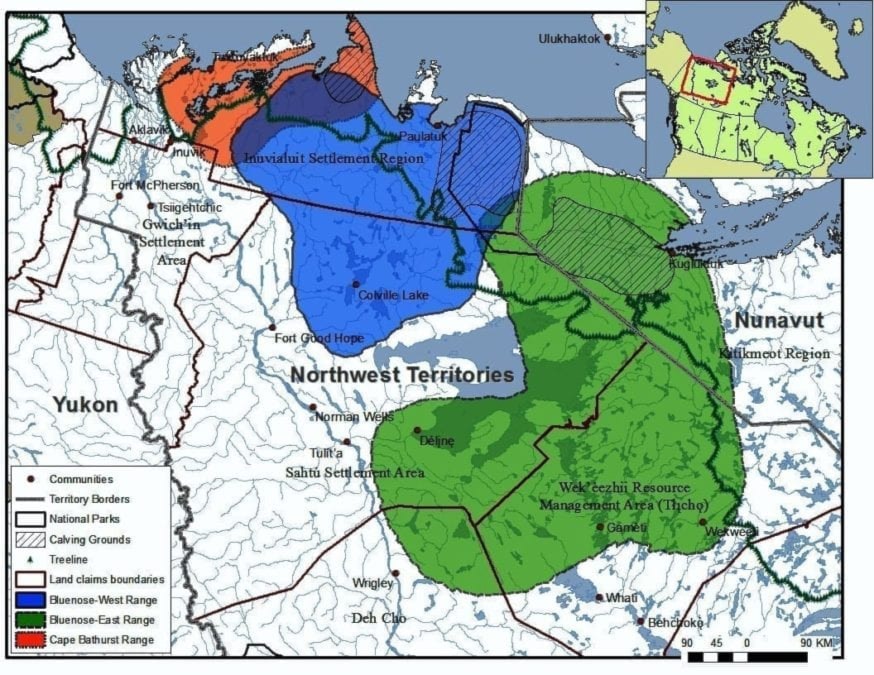Local populations of barren ground caribou are staying closer to thick bush and moving earlier in the year.
At least, that's what hunters who attended the annual meeting between the NWT Wildlife Management Advisory Council (WMAC) and the Inuvik Hunters and Trappers Association (IHTA) had to say Oct. 16 at the Inuvik Community Corporation Centre.

As well as giving residents updates on species at risk legislation, the meeting was an opportunity for hunters to offer their observations on the region's to researchers.
While the caribou harvested this year were generally healthy with clean livers, most were also quite lean, according to several hunters. Challenges arising from environmental conditions were also brought up.
"There's deep snow with a lot of ice on the open tundra, about an inch-and-a-half crystal-like crust and hills are glazed, making it hard to climb," said IHTA vice-president Douglas Esagok, who noted he had seen evidence of a number of landslides. "And lots of slumping in places that never used to be dangerous for travelling."
The caribou appear to be staying inside the thicker bush where snowmobiles have difficulty, he said. A lot of hunters did not fill their quotas as a result.
WMAC Wildlife biologist Rosemin Nathoo said her organization has been studying four herds: Tuktoyaktuk Peninsula, Cape Bathurst, Bluenose West and Bluenose East. The Tuktoyaktuk Peninsula herd is technically not under the ACCWM's management, but they collect data on behalf of the Inuvik Settlement Region.
"We collect caribou input and we also take the opportunity to visit the communities get their input on any other wildlife priorities they have or any other issues we need to consult on," she said. "We have this meeting in November because the caribou pass through the ranges of several different land claim areas. So the group will get together and determine how the herds are doing and from there decide on management issues."
Hunters have already been consulted in Aklavik and Tuktoyaktuk. A meeting in Paulatuk is planned for Oct. 29. Meetings in Ulukhaktok and Sachs Harbour are planned for January.
All observations are being sent to the Advisory Committee for Cooperation on Wildlife Management (ACCWM) where they're worked into the annual conservation master plan, which sets harvest levels and guidelines for further preservation of caribou and other species at risk.
Caribou are considered threatened under the Northwest Territories Species at Risk Act. A federal classification is in the works, but because the federal classification examines the species across the country, consultations take more time. A decision on how the caribou will be listed under the federal Species at Risk Act is expected in 2021.
A larger meeting hosted by the ACCWM is planned for Nov. 19 to 21 in Inuvik.
